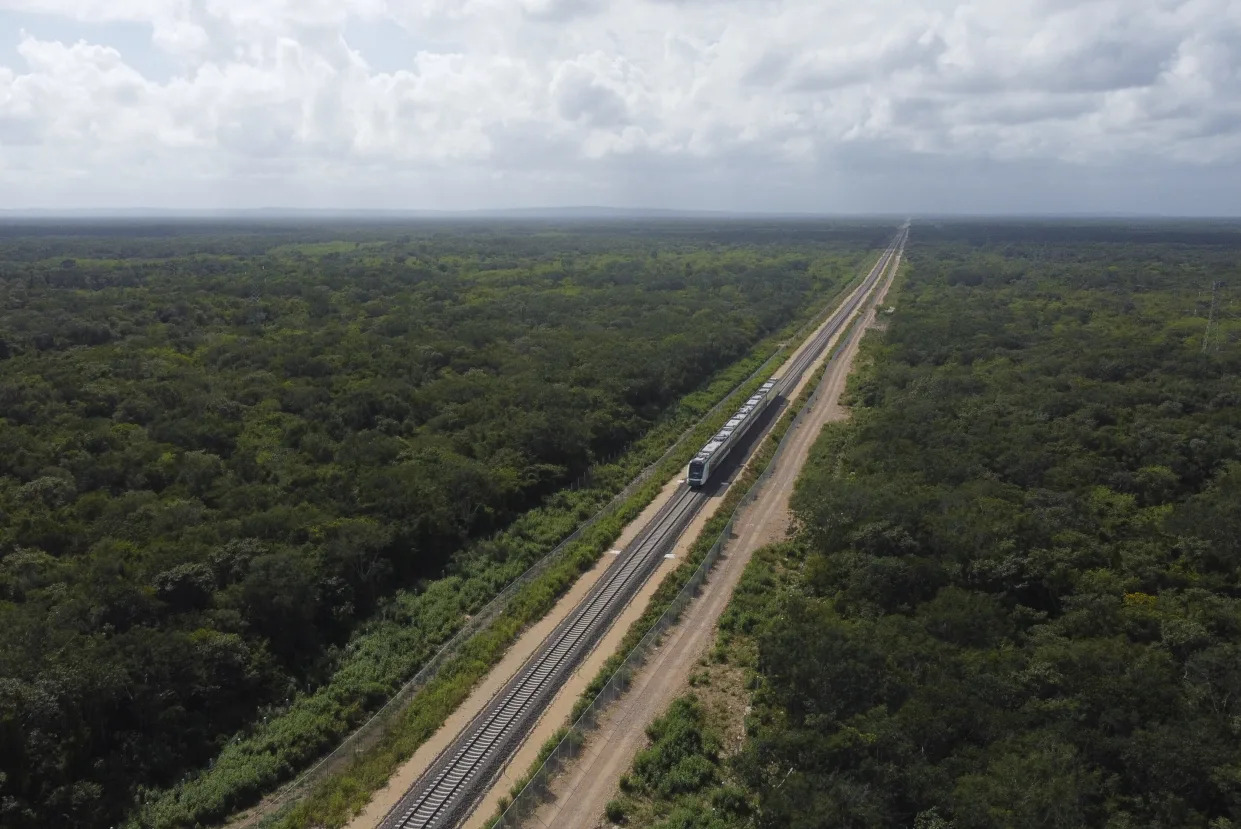Mexico's Yucatan tourist train sinks pilings into relic-filled limestone caves, activists show
Associated Press
Tue, January 23, 2024

FILE - The inaugural train with President Andrés Manuel López Obrador on board passes near Chochola, Quintana Roo State, Mexico, Dec. 15, 2023. (AP Photo/Martin Zetina, File)
MEXICO CITY (AP) — Activists in Mexico have published photos of steel and cement pilings from a government project that were driven directly through the roofs of sensitive limestone caves on the Yucatan peninsula.
The network of caves, sinkhole lakes and underground rivers along Mexico's Caribbean coast are both environmentally sensitive and have been found to hold some of the oldest human remains in North America.
President Andrés Manuel López Obrador had promised that part of his controversial $20 billion tourist train project, known as the Maya Train, would run on an elevated causeway supported by pilings to avoid crushing or disturbing the caves and sinkhole lakes known as cenotes.
They provide the region’s only fresh water source, because there are no surface rivers on the flat, limestone peninsula.
Authorities from the National Institute of Anthropology and History, known as the INAH, had claimed that soil mapping studies would be carried out to ensure the supports for the causeway wouldn’t hit caves. But caver and water quality expert Guillermo DChristy said Monday that was a lie.
“The promise from the president and the director of the INAH was that they (the caves) would be protected,” DChristy said. “López Obrador lied. They aren't protecting the caves and sinkhole lakes. The damage is irreversible.”
The army-run company that is building the train did not immediately respond to a request for comment on the pilings.
DChristy found the pilot columns sunk through the caves Sunday at a cave complex known as Aktun Túyul, near the beach town of Xpu Ha, about 17 miles (27 kilometers) south of Playa del Carmen. The columns appear to be almost 3 feet (1 meter) wide, with a steel jacket and poured cement core. The cave complex is located on an unfinished section of the train that runs between Cancun and the beach town of Tulum.
Because the caves were dry some 10,000 years ago, humans and animals used them before they were mostly flooded at the end of the last Ice Age about 8,000 years ago, essentially preserving the relics from being disturbed.
In December, López Obrador inaugurated another, partly finished section of the train to the north and east, between Cancun and the colonial city of Campeche.
The 950-mile line runs in a rough loop around the Yucatan peninsula and it's meant to connect beach resorts and archaeological sites.
López Obrador has raced to finish the Maya Train project before he leaves office in September, rolling over the objections of ecologists, cave divers and archaeologists. He exempted it from normal permitting, public reporting and environmental impact statements, claiming it is vital to national security.
While officials have touted the train as utilitarian transport for freight and local residents, its only real source of significant income would be tourists. However, given its frequent stops, unwieldy route and lack of feasibility studies, it is unclear how many tourists will actually want to buy tickets.
The train was partly built by the Mexican army and will be run by the armed forces, to whom López Obrador has entrusted more projects than any other president in at least a century.
No comments:
Post a Comment